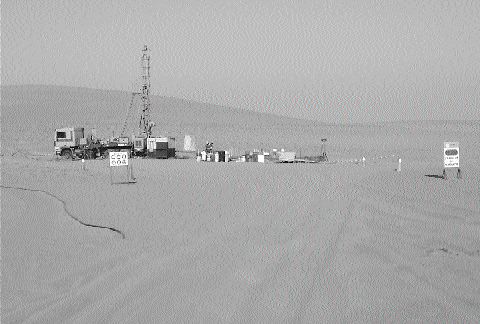Vancouver — Drilling at
The final few holes of initial core drilling on the iron oxide-copper-gold (IOCG) project returned more than 300 metres of massive magnetite mineralization grading 52% iron.
Since early 2004, when the program began, crews have drilled 14 holes (4,600 metres) and carried out surface mapping and geophysics. Several early holes aimed at copper targets met with limited success.
More recently, drilling has extended the iron mineralization that is known to exist. Hole 21 tested a three-dimensional model in the Central zone and, in the process, cut a wide intercept of magnetite mineralization over several hundred metres. The last 300 metres of core averaged 51.6% iron, 0.1% copper and trace amounts of gold. Grades increase farther down-hole, and mineralization is open at depth.
The Central zone appears to be a flat-lying, semi-massive-to-massive magnetite replacement lens up to 370 metres thick and more than 600 metres wide.
Magnetite, along with lesser specularite and copper sulphide mineralization, is primarily hosted in dolomites and the overlying andesitic volcanics in the IOCG environment. The project is in the Marcona iron-copper district, a northern extension of an IOCG belt in Chile that hosts
Cardero is earning a 100% interest in Pampa de Pongo from Rio Tinto for staged payments totalling US$500,000 over four years.
The project is 400 km south of Lima, near the large Chinese-operated Marcona iron mine (resource: 1.4 billion tonnes grading 54% iron) and the Mina Justa copper deposit (inferred resource: 218 million tonnes at 0.8% copper).
With 41 million shares outstanding, Cardero has a market capitalization of almost $155 million. Shares recently traded at $3.75.


Be the first to comment on "Cardero nails iron at Pampa de Pongo (April 18, 2005)"